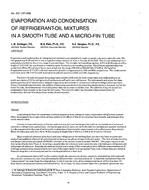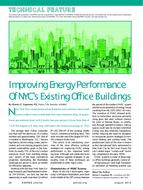This study examined the effect on energy use and thermal comfort when combining microencapsulated phase change material (PCM) with radiant ceiling panels in a two-person office. The performance of the system was studied during the cooling season in the climates of Copenhagen, Denmark, and Rome, Italy, using a basic cooling strategy and a night cooling strategy. Negligible effect was observed in both Copenhagen and Rome with PCM integration using the basic cooling strategy with a constant cooling set point of 26°C (78.8°F). This caused nearly constant temperatures in the office, preventing full utilization of the PCM potential as charge and discharge of the PCM was averted. Application of night cooling strategy created more optimum temperature conditions for PCM activation with cooling of the office during night down to 23°C (73.4°F), enabling discharge of the PCM. This decreased the peak cooling power by 15% and increased the occupied hours in Category I of the European standard EN 16798-1 (EN 2016) by 8% in Copenhagen. Clearer effects were observed in Rome, decreasing the peak cooling power by 17% and increasing the occupied hours in Category I by 18%. These enhancements were achieved due to reduced operative temperature fluctuations caused by the construction thermal mass increase when integrating PCM. The study was based on both measured and theoretical properties of the ceiling panels, and greater enhancements of thermal indoor conditions were obtained using the theoretical panel specifications.
Citation: 2018 Winter Conference, Chicago, IL, Conference Papers
Product Details
- Published:
- 2018
- Number of Pages:
- 7
- Units of Measure:
- Dual
- File Size:
- 1 file , 1.3 MB
- Product Code(s):
- D-CH-18-C067


